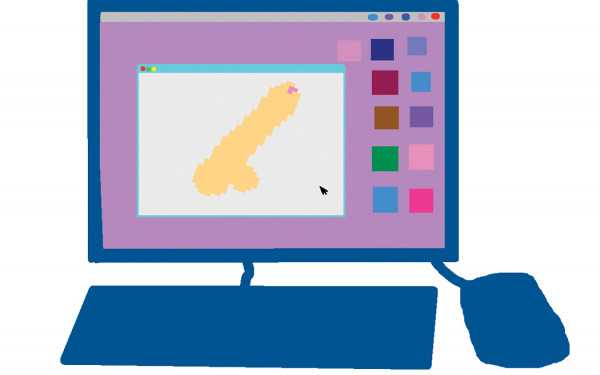Killing for E-Sport
Rialto Theatre Livestreams 2015 League of Legends World Championships
“I want you guys to fight for this,” the man onstage said, his amplified voice drowning out the crowd. “Kill each other for this!”
A woman stepped forward holding the prize. Hands reached out, but she threw it over the masses, and they fell on it in a swarm. A hand shot up, tightly clutching the plushie hat—welcome to the end of Montreal’s screening of the League of Legends 2015 World Championships.
The gaming competition took place in Berlin, but over 1,000 Montreal fans went to the Rialto Theatre at 7 a.m. on Halloween to watch players battle it out an ocean away. The event was packed—standing room only—before the sun was fully up.
League of Legends is a Multiplayer Online Battle Arena game, or MOBA. Players take the role of different champions and complete various game objectives, such as guiding smaller computerized characters across different maps to enemy bases, fighting other champions, killing dragons and leveling up.
“I didn’t think it was going to be full right away,” said Simon Auger, a 29-year-old game tester. “We had trouble finding two seats next to each other and we were here at 7:30. a.m.”
“Well it said [7 a.m.] and I wanted to get here early ‘cause I was like, ‘There’s going to be a lot of people,’” said Tanya Pleau, 23, also a game tester. “He [was] like, ‘It’s not that big, this game’s not that big.’”
It is that big.
Twenty-seven million people watched last year’s finals according to League of Legends developer, Riot Games. This year, the finals hosted approximately 17,000 fans in the Mercedes-Benz Arena and live-streamed to viewing parties all over the world. The Rialto Theatre was actually featured in the stream, to massive applause from the crowd. Viewers at home also watched on their phones, tablets, and computers.
Twenty-seven million people watched last year’s finals according to League of Legends developer, Riot Games. This year, the finals hosted approximately 17,000 fans in the Mercedes-Benz Arena and live-streamed to viewing parties all over the world. The Rialto Theatre was actually featured in the stream, to massive applause from the crowd. Viewers at home also watched on their phones, tablets, and computers.
In the dark of the Rialto, the audience watched the finalists fight for the silver, 70-pound Summoner’s Cup and a prize of one million dollars. Both teams of finalists hailed from Korea—the reigning champions, SK Telecom T1, and their challengers, the KOO Tigers, whose introduction video called them “the most beautiful, the almighty, the second-place team.” The KOO Tigers placed second, taking home a tidy consolation prize of $250,000.
For the uninitiated, a League of Legends match is a confounding blur of colours, numbers, and jargon. If you’re unfamiliar with phrases such as “multiple ash arrow ripostes” or “ganks on the map” you will be confused. Nevertheless, the action is compelling and fun.
Jargon is the key obstacle to becoming a successful League of Legends player. The game is free and its animation style is easy on graphics cards, so almost any computer can handle it. The fast-paced matches are designed to build into natural crescendos, each encounter raising the stakes, as champions become more powerful. According to Riot Games, 67 million people play League of Legends every month.
“I got to say it’s getting bigger and bigger. Maybe [it will be] a real sport? Who knows?” said Martin Cossette, a CEGEP student, sporting a Habs hat. He was at the bottom of the theatre’s stairs, where men and boys stood in line for the bathroom.
There was no line for the women’s bathroom.
In fact, the biggest concentration of women onstage or onscreen during the entire event was at the end, when seven women took the stage for a cosplay contest—only two wore pants. While 44 per cent of all gamers are women, according to a 2015 report by the
Entertainment Software Association, 100 per cent of the players and commentators in the 2015 League of Legends World Cup Finals were male.
It’s an issue Riot Games has faced before, as female characters in the game tend to fulfill male fantasies, dressed more scantily than their male counterparts. It’s an issue that is apparently being worked on, but it hasn’t seen much progress.
Nevertheless, the crowd in attendance enjoyed their show. They devoured the ups and downs of the four games. They cheered when the KOO Tigers broke their opponents’ undefeated streak, and then they cheered when SK1 won it all back. It was lively, loud and frantic—just like any live sports event broadcast.

2_900_600_90.jpg)
3_900_600_90.jpg)
1_900_600_90.jpg)
_600_832_s.png)



_600_375_90_s_c1.jpg)
3_600_375_90_s_c1.jpg)